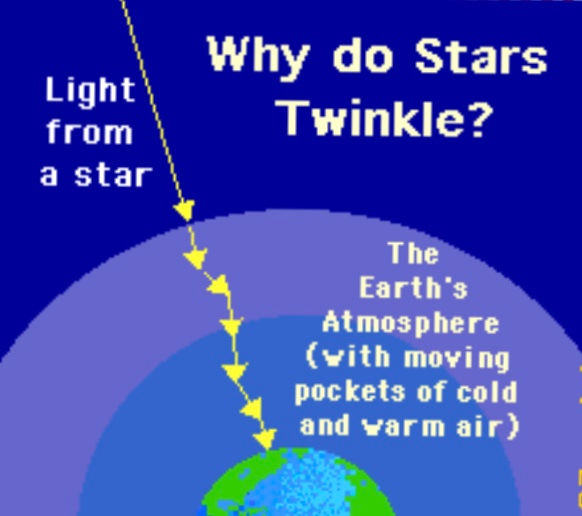Why do stars twinkle?
- STEAMworks OC
- Aug 15, 2020
- 3 min read
Updated: Aug 17, 2020

Have you ever heard the song “Twinkle, Twinkle, Little Star” and wondered, how exactly do these little stars glimmer and shine? Probably. Have you ever looked up at the night sky to see thousands of stars shining back at you? Most definitely. It’s no question that the night sky is
in all its glory, but what makes those stars, millions of miles away, twinkle?
How do stars form in the first place?
Space is full of matter, the stuff that makes up you and me! Large groups of this matter can be found in mass quantities across the universe - which is exactly where stars come from! These groups of matter form dust clouds known as nebulae. As more and more dust collects, gravity within the cloud starts to take hold of billions of particles within the nebula. Thousands upon thousands of gas and dust particles start to collapse into each other and the gravitational attraction between each particle builds and builds, pulling in more particles of dust and gas. Think of it like the gravity on Earth. We’re held to the ground by the force pulling us in towards Earth’s core. This force that keeps us on the ground is called gravity! Because of the gravitational pull, dust and gas particles are confined to a much smaller space than before; therefore heat and pressure begin to increase. The first step of star formation, the protostar, has started! This hot ball of dust and gas is the start of a star that will go on to live on for billions of years. Due to its gravitational pull, this protostar will continue to grow as it pulls in more and more dust particles. However, not all of the dust and gas found in this nebula will end up being a star. If the heat and pressure don’t build up enough to form a protostar, the balls of dust and gas will form into planets instead! Once a nebula becomes planets and stars, a solar system is born! Our solar system, the Milky Way, is made up of 8 planets (including Earth!), more than 200 moons, and almost one million asteroids! At one point all of those things were simply dust and gas floating through space.

Why do stars twinkle?
Now that we know how stars are formed in the first place, exactly how do these stars twinkle? Well, in order to twinkle, these stars have to shine. The light we see when we look at the stars and the Sun is the result of a chemical reaction! Let’s dive into the chemistry of this reaction.

As seen in the diagram above, hydrogen atoms fuse together due to the extreme heat and pressure. In turn, the hydrogen atoms start to form helium, you know, the stuff that makes balloons float! This fusion of hydrogen atoms releases a lot of energy, which is the light and heat we see and feel from the Sun and every star in the sky!
Now that we know where starlight comes from, how exactly do these stars twinkle? Think of the stars we see in the sky as flashlights. Their light travels millions of miles to reach our eyes. When you shine a flashlight onto a surface, you can see a direct beam of light, but no twinkling. Starlight is the exact same, but what makes a flashlight and starlight different is that the starlight we see in the night sky has to pass through Earth’s atmosphere. Have you ever looked at something underwater and you see it wiggle and look all distorted? The atmosphere changes the path of starlight the same exact way! As starlight from a star millions of miles away passes through Earth’s atmosphere, it becomes refracted and distorted, making the star appear to twinkle! Earth’s atmosphere has many layers — think of it as peeling an onion — and as light passes through those layers, the light is directed in different ways.

The night sky seems insanely large and mysterious sometimes, but one thing is for sure: those twinkling stars will always keep twinkling back at you. So, breathe in, thank the Earth for the dazzling light show, but thank the stars millions of miles away as well.




Comments